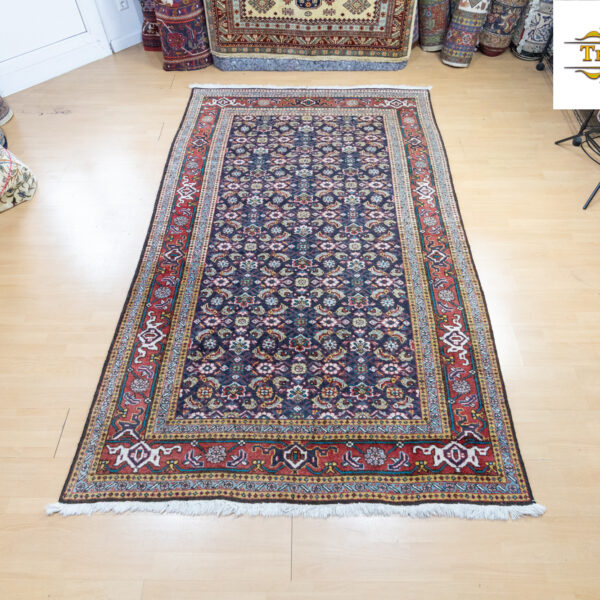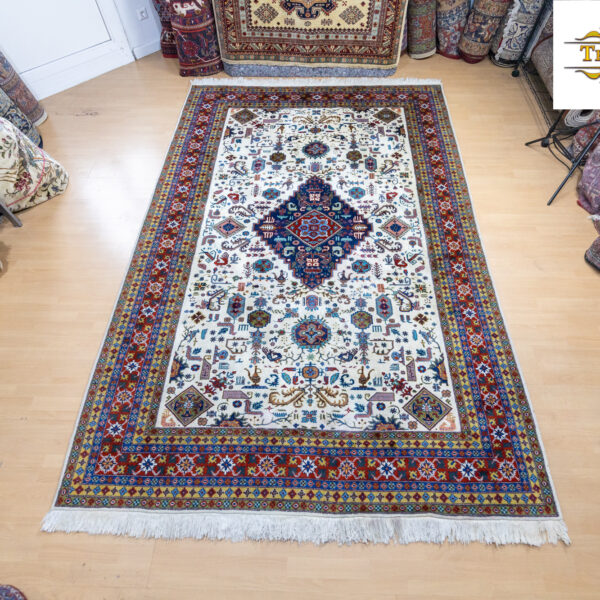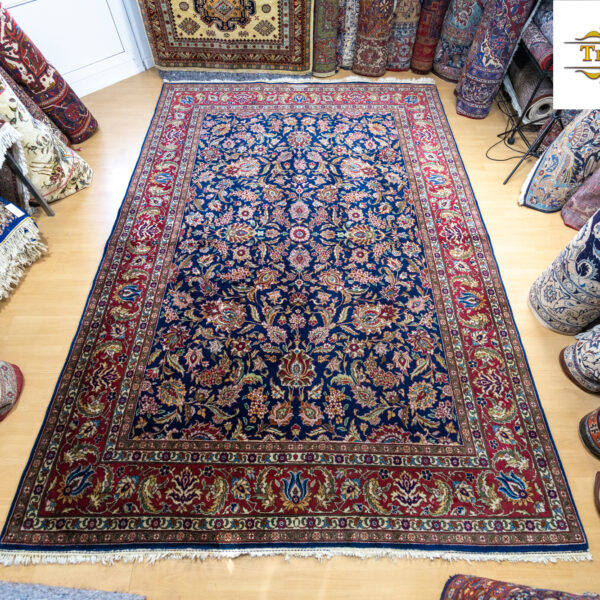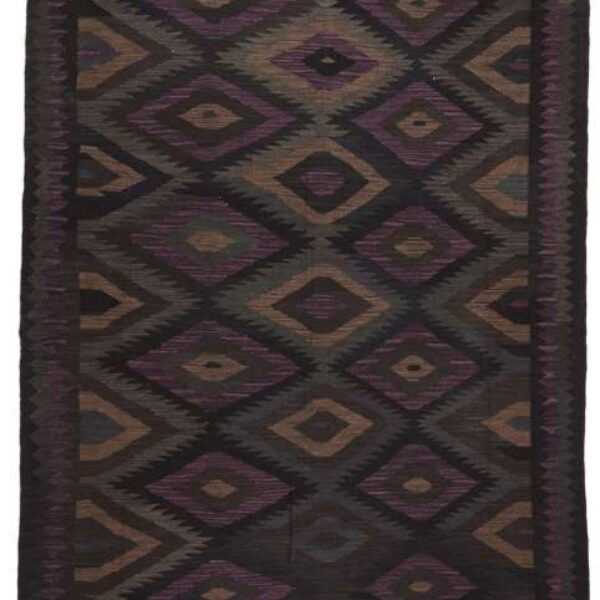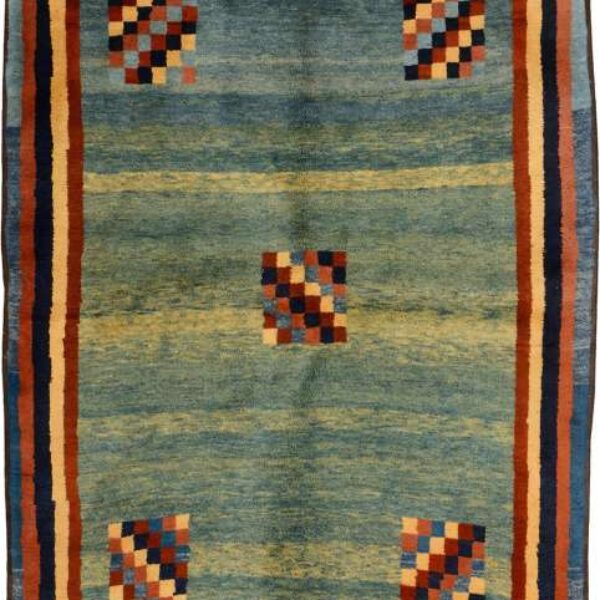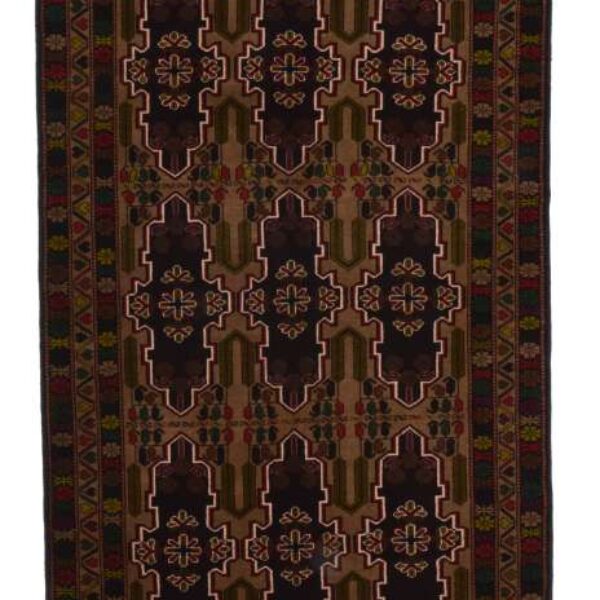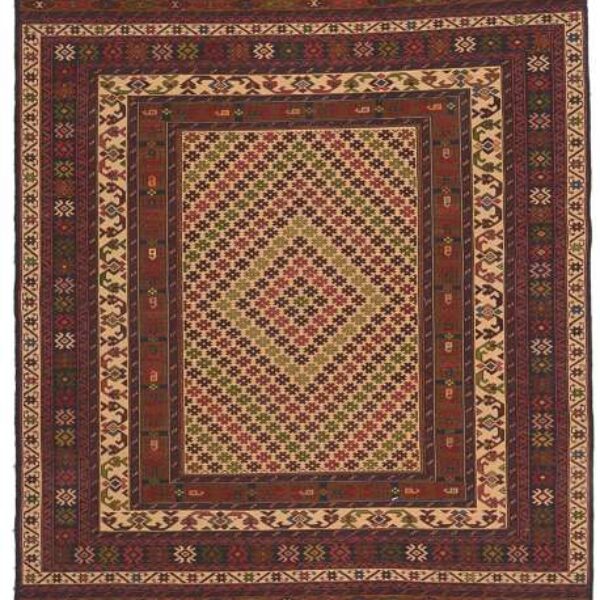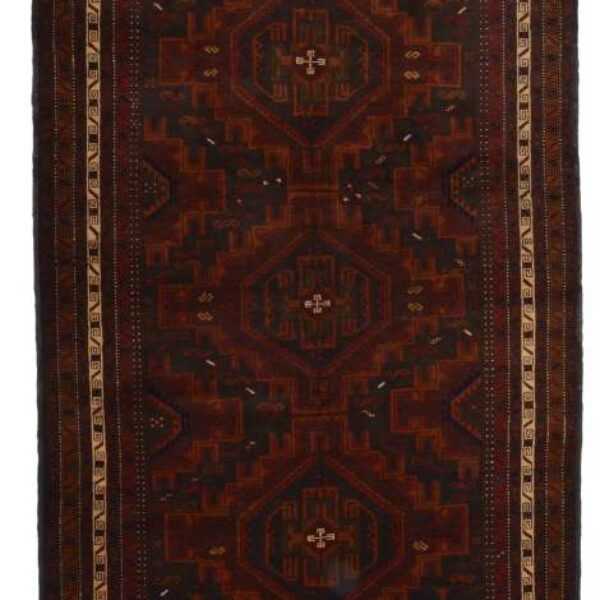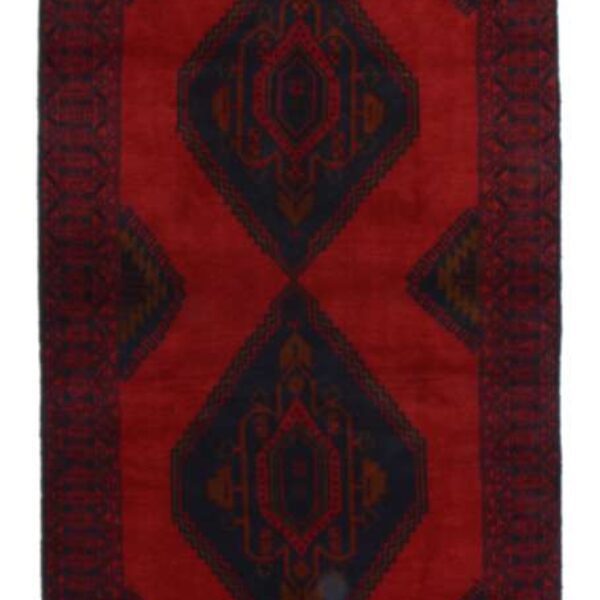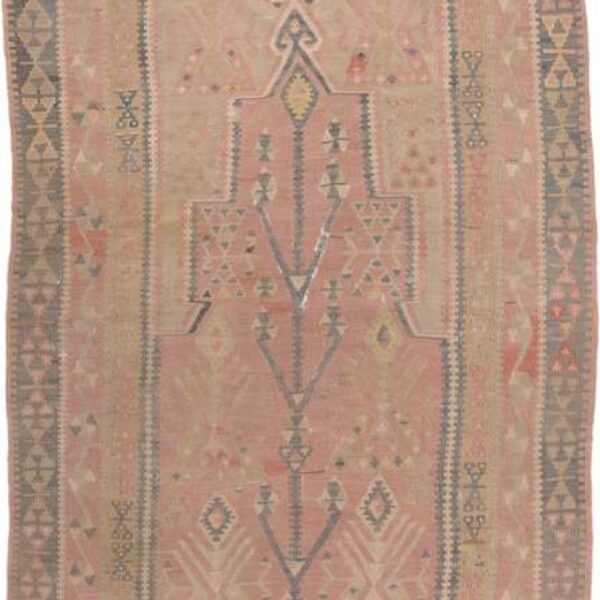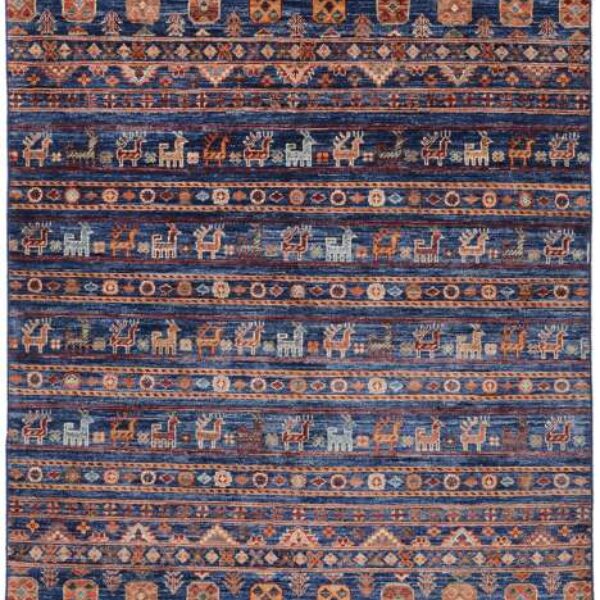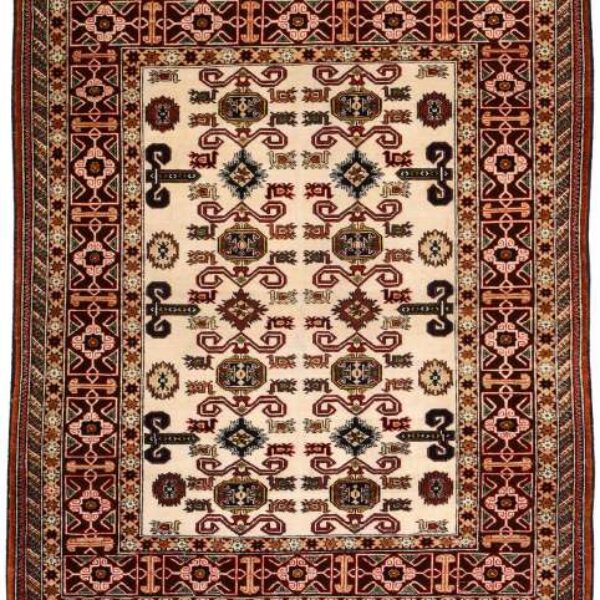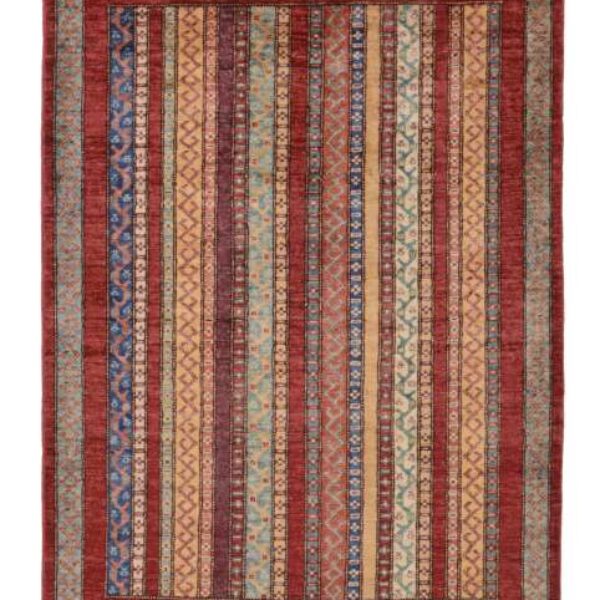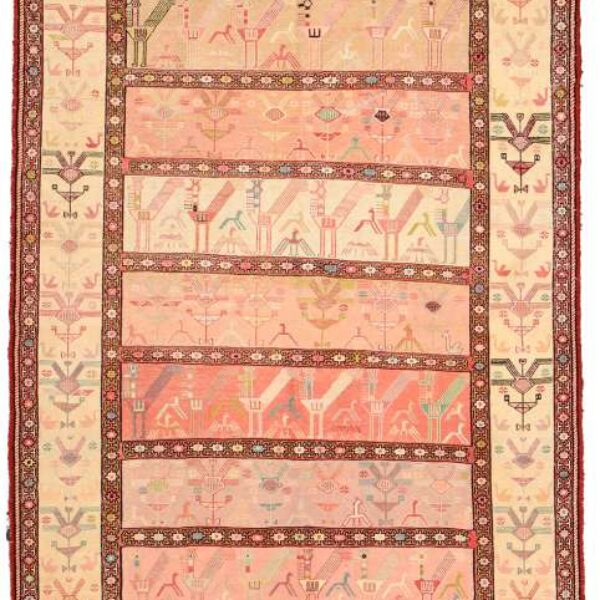Kelim
Introduction to Kilim
The kilim is a type of flat-woven rug characterized by rich colours, bold patterns and vibrant designs. Kilims are mainly woven in Turkey and a few other countries including Iran, Afghanistan and India.
A kilim is known by different names in different parts of the world. In Turkey and Poland it is known as kilim, the Croats and Serbs call it ćilim and the Kurds call it berr.
How kilims are woven
Kilims are made by weaving the warp and weft threads very tightly together to create a flat rug. The lack of pile is a characteristic feature of kilim rugs. The weave used is technically a tapestry style, in which the horizontal threads are pulled tight so that the vertical warp threads are completely covered and obscured.
To begin weaving a kilim, the cotton, linen or wool warp threads are stretched taut on a vertical loom. The weaver then weaves brightly colored weft threads through the warp to create the desired pattern. The carpet is woven so tightly that no trace of the simple warp threads can be seen. When the rug is finished, the warp threads are tied into a fringed ribbon.
Kilim design
Kilim rugs are usually woven with floral or geometric motifs. Many kilims bear some sort of tribal badge that refers to the area in which they were woven.
Because the kilim is flat-woven and has no pile, it is usually very thin and can be quite coarse or soft, depending on the fibers used for binding. Cotton, wool and silk are all fairly common fibers. In addition to being used as flooring, kilims are also used as saddlecloths, prayer rugs, and as padding to insulate homes.
What makes kilim rugs different
The difference between a kilim rug and other types of rugs is that the pattern on the kilim is created by weaving different colored weft and warp threads, creating what is known as a flat weft.
Other carpets, on the other hand, have a pile and cannot be considered flat-weave. They are created by knotting individual short threads of different colors on the warp threads and holding them together by pressing the weft threads against each other.
The entire pattern is created by the arrangement of these individually knotted threads that form the pile. If the pattern is very fuzzy and indistinct at first, it becomes clearly visible after the extra lengths of knotted material are cut off to create a uniform surface.
Because of the way they are woven, their lower density and their simple but bold geometric designs, kilims tend to have a more graphic look and informal character.
Distinctive features of the kilims
A characteristic feature of the kilims are the clearly visible slits in the pattern. When the end of a color line is reached and new colors are needed, many weavers simply stop and finish at that point, rather than weaving the new color.
In this way, the carpet is enriched with small vertical slits along the sides of the pattern, between the meeting areas of different colors.
In some cases these slits can be sewn together, but more often than not they are left as is, which is why kilims are often referred to as 'slit weavings'. Many collectors are actively looking for rugs with slits. They find them more valuable because they create very sharp and defined patterns that emphasize the geometry of the fabric.
There are weaving strategies that the weaver can use to avoid the formation of slits, but all of these strategies result in a pattern with fuzzy and fuzzy edges.
Tools for making kilims
For the manufacture of kilims, weavers almost always use wool for the weft, which bears the visible color and pattern. The hidden warp threads can be made of cotton or wool. The only place where the warp threads are visible is at both ends where they form the fringes.
To make a kilim, the weaver uses very simple tools: a loom, a shuttle (optional), a comb to beat, and a knife or scissors to cut the wool. Sometimes silk, cotton and animal hair are used in addition to wool. Some of the more elaborate kilims incorporate silver or gold threads and other decorative beads into the design during weaving.
The beating comb is an interesting little tool used by the kilim weavers. It can be made of wood, bone, or metal, and resembles a larger, coarser version of the hair combs we use. Kilim weavers use the comb to beat or press new weft lines against older ones, creating the dense weft so characteristic of kilims.
“Errors and mistakes excepted”
